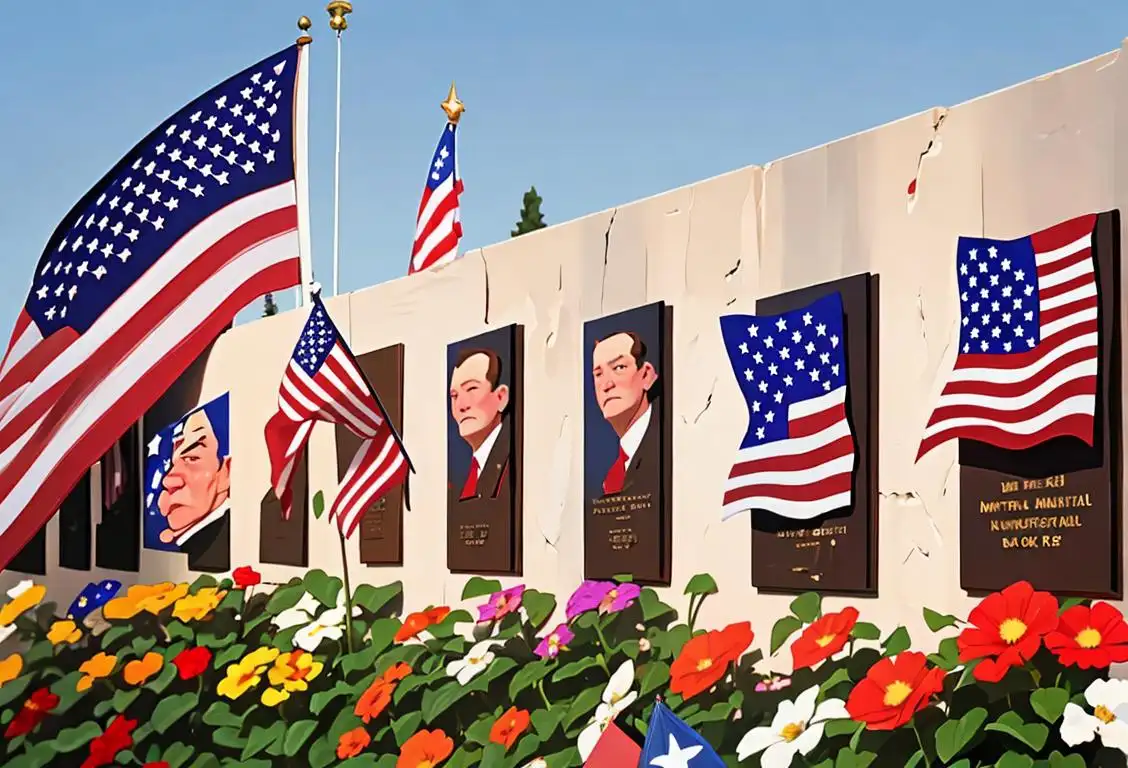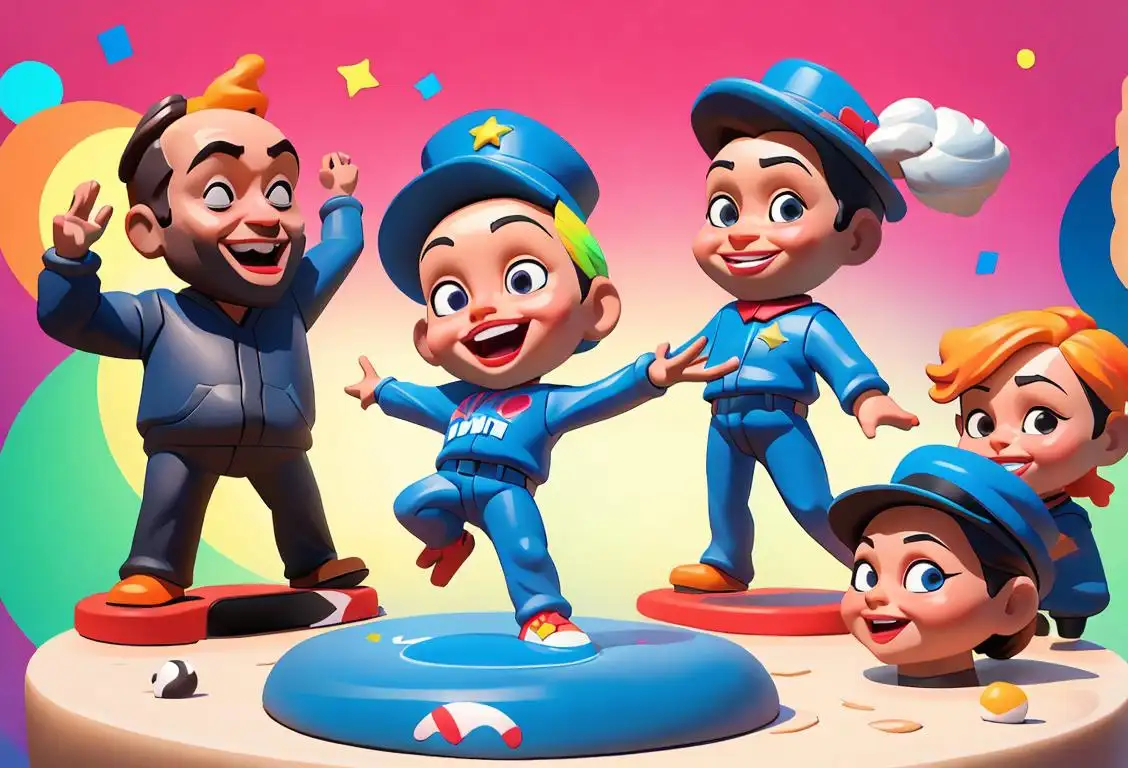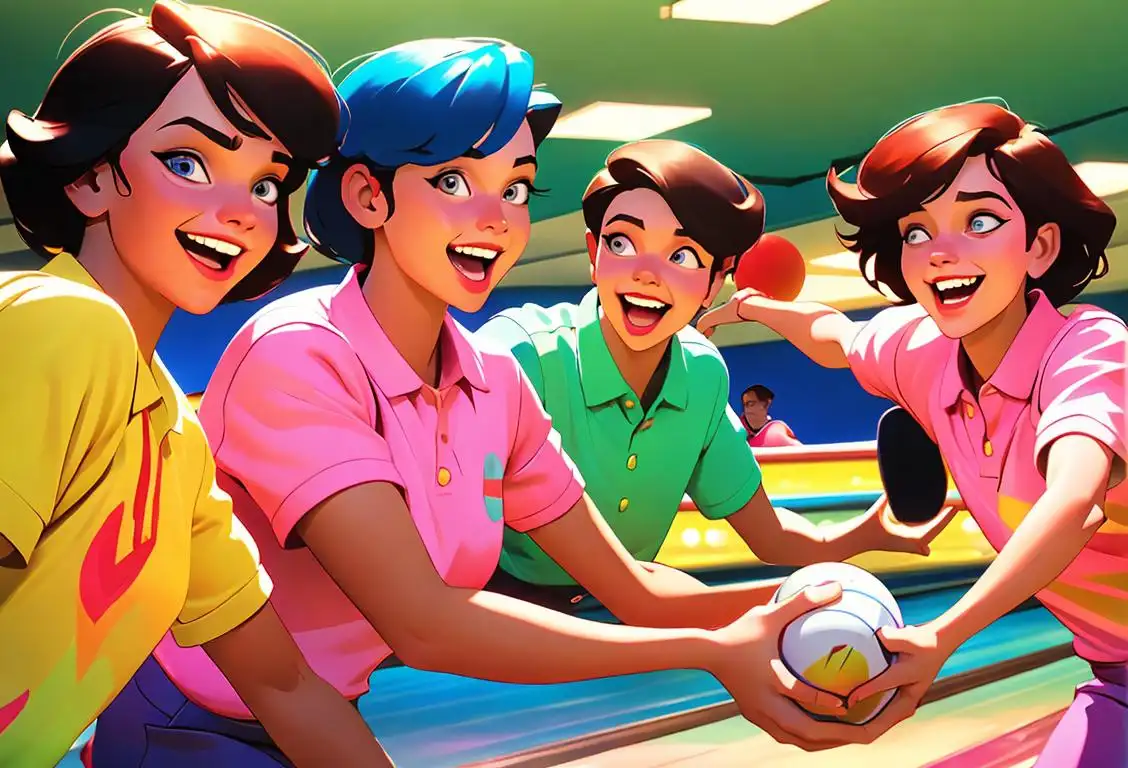National Water Balloon Day

Welcome, fellow water warriors! Get your buckets ready because National Water Balloon Day is here to soak up all of your fun and excitement. Whether you want to cool down on a hot summer day or engage in an epic water fight with your loved ones, this is the perfect day to unleash your inner child and make a splash. So grab your water balloons and let's dive into the wet and wild world of National Water Balloon Day!
When is Water Balloon Day?
It's national water balloon day on the 7th August.
The History of National Water Balloon Day
While the origins of National Water Balloon Day are as mysterious as a dripping water faucet at midnight, the popularity of water balloon fights can be traced back to ancient times. Okay, maybe not ancient times, but at least to the invention of rubber balloons in the 19th century.
It's safe to say that water balloon fights have been a cherished pastime for generations, providing endless fun and laughter for people of all ages. These delightful bursts of joy involve filling latex orbs with water, then launching them through the air with impeccable aim (or not so impeccable, if you're like most of us).
In recent years, National Water Balloon Day has gained traction on social media, giving water balloon enthusiasts a designated day to come together in a wet and wild celebration. It has become a day to create lasting memories, unite friends and family, and of course, get completely drenched.
Water-Logged Fun on National Water Balloon Day
Now that you know the history, it's time to explore the numerous ways you can make the most of this special day. Here are a few ideas to get you started:
- Organize an epic water balloon fight in your backyard or local park. Don't forget to establish some ground rules to ensure safety and fairness, unless chaos and unpredictability are more your style!
- Host a water balloon toss competition and see who can catch the most balloons without bursting them. Prepare for laughs and soggy surprises!
- Take on the ultimate challenge of creating the world's largest water balloon. Just make sure you have plenty of space and a strong team to wrangle that colossal balloon.
- Set up a refreshing water balloon drop for a surprising splash on unsuspecting friends. Be ready for screams and squeals of delight!
- Channel your inner artist and create colorful water balloon paintings by throwing them at a canvas. It's like Jackson Pollock meets H2O!
Fun Fact
Did you know that the world record for the largest water balloon fight consisted of over 8,957 people and took place in Kentucky in 2011? That's a whole lot of soggy participants!
History behind the term 'Water Balloon'
1892
The Invention of Rubber Balloons
In 1892, Thomas Hancock, an English inventor, patented the process of manufacturing rubber balloons. These balloons were initially made for use in scientific experiments and as novelty items.
1950
The Birth of the Latex Water Bomb
In the year 1950, a revolutionary invention made a splash in the world of water play. The latex water bomb was invented by a man named Edgar Ellington, who wanted to create a more exciting and thrilling way to play with water during the summer months. These water bombs were small, round balloons made of latex rubber that could easily be filled with water and thrown with great accuracy and velocity. The invention quickly gained popularity among children and became a staple of backyard water games.
1401
Early Origins
The term 'water balloon' finds its roots in an ancient Chinese practice. In the year 1401, during the Ming Dynasty, Chinese soldiers would fill animal bladders with water and use them as a form of entertainment during festivals. These makeshift balloons were a hit among the people, bringing joy and laughter to gatherings and celebrations.
1892
Invention of rubber balloons
In 1892, the rubber balloon was invented by an English engineer named Thomas Hancock. The rubber balloon was initially used for scientific experiments and transportation of goods.
1937
The Invention of the Rubber Water Bomb
In 1937, the rubber water balloon, also known as the water bomb, was invented by an English scientist named Edgar Ellington. Ellington, who worked for a company that manufactured rubber products, developed the idea of using rubber to hold water and created a spherical shape that could be filled with water for play and amusement.
1892
The Invention of Rubber Balloons
In 1892, the rubber balloon was invented by American chemist and inventor, Thomas Hancock. He discovered that by coating a piece of rubber with a solution of rubber juice, he could create a stretchy and flexible material. This invention laid the foundation for the creation of water balloons in the future.
1943
Introduction as a Recreational Tool
In 1943, water balloons started gaining popularity as a recreational toy among children and adults. The rubber water bombs were used for various outdoor activities, such as water balloon fights and tossing games, providing a fun and refreshing way to cool off during hot summer days.
1951
The Birth of the Term 'Water Balloon'
Although the latex water bomb had gained popularity, it was in the following year, 1951, that the term 'water balloon' was first officially used. The term was coined by a group of children who were playing with the latex water bombs and found the term 'water balloon' to be a more fitting description for the fun and playful nature of the toy. The term quickly caught on and became the commonly used name for these water-filled projectiles.
1824
First Patent
Nearly four centuries later, the term 'water balloon' reemerged with the invention of the rubber balloon. In 1824, Michael Faraday, a British scientist, received the first patent for his invention called 'India-rubber balloons.' These early rubber balloons were filled with water and used for experiments rather than recreation.
1950
The Birth of Water Balloons
In the 1950s, a clever inventor named Edgar Ellington saw the potential for the existing rubber balloons to be used in water-based recreational activities. He started producing rubber balloons specifically designed for filling with water, dubbing them 'water balloons.' The smaller size and ability to hold water securely made them ideal for water fights and other water-related games.
1943
Development of the water balloon
The development of the water balloon can be traced back to 1943 during World War II. The U.S. Navy needed a way to quickly and efficiently fill up aerial bombs with water to simulate the weight of real bombs for training purposes. This led to the invention of the water balloon, designed specifically for filling with water.
1950s
Water Fight Games with Balloons
During the 1950s, water fights became a popular summer activity for children and adults alike. People would often use regular rubber balloons filled with water to throw at each other, creating a fun and refreshing game. However, these regular rubber balloons tended to burst easily, limiting the amount of water fun one could have.
1888
Toy Innovation
The term 'water balloon' gained popularity in 1888 when Samuel Slocum, a toy manufacturer from Connecticut, introduced the first mass-produced rubber balloons specifically designed for play. Slocum's water balloons quickly became a favorite among children, allowing them to engage in water-filled fun during hot summer days.
1950
Popularity among children
By the 1950s, water balloons gained popularity among children as a fun and entertaining summer activity. The ability to throw water-filled balloons added a new dimension of playfulness to outdoor games and water fights.
1952
Mass Production and Popularity
By 1952, mass production of water balloons had begun, making them easily accessible to the public. The affordability and widespread availability of these water-filled projectiles contributed to their rapid rise in popularity. Water balloons became a staple of summer fun and a symbol of carefree enjoyment.
1950s
Mass Production and Commercial Availability
During the 1950s, the production of rubber water balloons was scaled up, and they became widely available in stores. The affordability and ease of filling and throwing made water balloons a beloved item for summer pastimes. The colorful balloons added an extra element of excitement and made water balloon activities even more enjoyable.
1950s
The Birth of Water Balloons
In the 1950s, a toy inventor named Edgar Ellington noticed the limitations of regular rubber balloons for water fights. Inspired to create a better alternative, he developed the first water balloon. These new balloons were made from thinner latex, allowing them to stretch more without bursting. They quickly gained popularity due to their ability to hold more water and withstand the force of throwing.
1960
Mass Production and Commercial Success
By the 1960s, the water balloon had become a staple of summer fun for kids and adults alike. Mass production techniques were developed, allowing for large quantities of water balloons to be manufactured quickly and cost-effectively. This led to widespread availability and increased accessibility of water balloons, further cementing their place as a must-have item for summertime water games and activities. The commercial success of water balloons demonstrated the enduring appeal of these simple yet exhilarating toys.
1930s
Modern Design
By the 1930s, the term 'water balloon' became synonymous with the distinctive shape and design we recognize today. The advent of latex rubber technology allowed for the production of smaller, more durable, and easier-to-fill balloons. This modernization made water balloons more accessible and affordable for widespread use in water fights and outdoor activities.
1980
New Variations and Water Balloon Games
In the 1980s, new variations of the traditional water balloon began to emerge. Toy companies started producing water balloons in different shapes, sizes, and colors, adding an element of novelty and creativity to water balloon fights. Additionally, various water balloon game ideas and competitions gained popularity, such as water balloon tosses, relays, and target games. These inventive games brought a new level of excitement and challenge to water balloon play, further solidifying their place as a beloved summertime tradition.
1980s
Water Balloon Warfare
By the 1980s, water balloon fights had evolved into organized water balloon warfare. This meant that specific rules and strategies were developed for these epic battles. Some even held competitions and tournaments where teams would engage in tactical battles, using water balloons as their weapons. Water balloons had become a symbol of summertime fun and friendly competition.
1985
Record-Breaking Water Balloon Fight
On July 17, 1985, the largest water balloon fight in history took place in England. A staggering 8,957 participants armed themselves with water balloons, breaking the previous Guinness World Record. This event not only showcased the enduring charm of water balloons but also solidified the communal aspect of their usage.
1985
Water balloon festivals and Guinness World Records
In 1985, the first water balloon festival was organized in the United States. These festivals brought people together to celebrate the joy of water balloon fights and often included various activities and competitions. The popularity of water balloons reached new heights during this era, with people attempting to break records for the largest water balloon fights as recognized by the Guinness World Records.
1961
Water Balloons in Motion Pictures
Water balloons gained even more recognition in popular culture with their appearance in the 1961 film 'The Parent Trap.' In one memorable scene, the characters engage in a water balloon fight, showcasing the fun and playful nature of these rubber-filled projectiles. This film exposure further contributed to the growing popularity and perception of water balloons as a symbol of summer fun.
Modern times
Continued enjoyment and creative use
Today, water balloons continue to be a beloved summertime tradition for both children and adults alike. They are not only used for water fights but also serve as props in various creative activities, including games, relays, and even art projects. With advancements in biodegradable materials, eco-friendly water balloons have become a popular choice to minimize environmental impact.
Present Day
Water Balloon Festivals
In the present day, water balloon festivals are held in various parts of the world, bringing communities together in the spirit of joy and celebration. These festivals often feature massive water balloon fights, where thousands of participants gather to throw water balloons at each other. It's a great way to beat the heat and enjoy the camaraderie of others. Water balloons have become an iconic symbol of summer, fun, and a playful way to stay cool.
Present
Continued Popularity and Variants
Water balloons remain a beloved summertime tradition across the world. Their popularity has given rise to various innovations, including biodegradable water balloons and even pre-tied water balloons for added convenience. While the basic concept of an easily fillable balloon for water-based fun has remained consistent, improvements continue to enhance the experience for people of all ages and backgrounds.
1980s
Innovation: Self-Sealing Water Balloons
In the 1980s, self-sealing water balloons emerged as an innovative variation. This new design included a small valve or closure mechanism that eliminated the need for tying knots manually. The self-sealing feature made filling and tying water balloons significantly faster and more convenient, enhancing the overall water balloon experience.
Present
Continued Popularity and Cultural Impact
Today, water balloons continue to be a beloved and iconic symbol of summer fun. They are a staple of backyard parties, water fights, and community events, bringing people of all ages together to enjoy the thrill of splashing and cooling down on hot summer days. Water balloon launches have even been incorporated into record-breaking attempts, with massive groups of people simultaneously launching water balloons to achieve world records. The term 'water balloon' has become ingrained in popular culture and is synonymous with joyous water-filled play.
Today
Continued Popularity
In the present day, water balloons continue to bring joy and excitement to people of all ages. They have become an iconic symbol of summer fun and a staple in traditional water games. Despite the invention of various water toys, the simple pleasure of tossing a water balloon remains an enduring source of entertainment and a refreshing way to beat the heat.
Present
Continued Popularity and Creative Uses
Throughout the years, water balloons have remained a popular summer tradition, enjoyed by people of all ages. In addition to water balloon fights, they are often used for various creative purposes like water balloon tosses, target games, and even scientific experiments. Water balloons continue to bring laughter, excitement, and a refreshing splash to warm summer days around the world.
Did you know?
Did you know that the world record for the largest water balloon fight consisted of over 8,957 people and took place in Kentucky in 2011? That's a whole lot of soggy participants!Tagged
fun loved ones sportsFirst identified
2nd August 2019Most mentioned on
7th August 2020Total mentions
158Other days
Suicide Prevention Month Day
Happiness Day
Drink A Beer Day
Trivia Day
Cancer Survivors Day
Take A Hike Day
Memorial Day
Foundation Day
Bobblehead Day
Bowling Day









